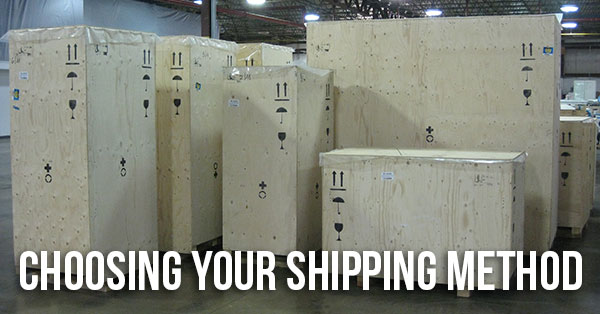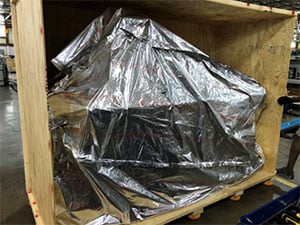
May 22, 2019 : 2 min read
What Is the Best Way to Ship Medical Imaging Equipment?
What is the best way to ship medical imaging equipment? The short answer: it depends. There are several factors at play when you and your equipment provider discuss shipping methods. Each method fits a specific set of circumstances. There may be several good options for your particular purchase, or they may be only one that ticks all the boxes. Keep reading for a brief on each method and which scenarios they're the best pick for.
Medical Equipment Shipping Methods
The three primary modes used to ship medical imaging equipment are trucking, ocean freight, and air travel. There's a time for each, and the circumstances of each order will determine which is the best fit.
Trucking
For domestic shipping, or shipping between countries that share a land border, trucking is generally the best way to ship your equipment. The best trucking method to balance cost, timing, and safety is via van line carrier with Air Ride trucks. Van line carriers are the same type of company you would use to relocate your household goods in a move. For medical imaging equipment, the van line carefully moves the already properly wrapped, braced, and padded system onto the truck and secures it safely with blankets and straps. The shock resistance of Air Ride suspension eliminates the need for, end expense of, full crating. After transport to the destination, the van line carefully unloads the system at your facility under the oversight of the install engineering team.
The other alternative for trucking is via less than truckload (LTL) or full truck load (FTL) carrier. FTL and LTL carriers are hands-off and generally do not have Air Ride trucks. For this reason, we only recommend transporting medical imaging systems via LTL and FTL when a system is fully crated with 6-sided crating and pallet cushions on the bottom of the crate. A fully-crated system can be much safer for transport, however, the cost and time involved to fully crate and then uncrate is added on.
Ocean
Most of the time, ocean shipping is the least expensive method for international shipments. However, this method will take 20 to 60 days, depending on the sailing schedule and routes available. Ocean shipping options include a full container in twenty and forty-foot varieties or a less-than-container load if you can’t fill up a 20’ container (which really doesn’t take much after crating). Because containers are often placed on the deck of the ship and can get quite wet (literally flooded with water), all equipment must not only be crated, but inside the crate must be vapor bagged– essentially completely sealing the equipment with foil and providing full moisture protection. Ocean shipping is a completely safe method for transport when the equipment is properly crated.
 Air
Air
Air shipment is typically the fastest way to ship equipment internationally and domestically, but it is usually the most expensive. For systems needed quickly overseas, air shipment is the only way to go. Full encasement crating is required, though moisture protection is not generally necessary. Domestic air shipment, while fast, is expensive and still requires crating, which takes time. You can often use a dedicated van line truck within the continental US and get the system there in about the same amount of time with much less cost.
The Takeaway
Unfortunately, there is no Amazon Prime equivalent for shipping medical imaging systems. Costs and transit times vary. So, what is the best method to ship your medical equipment? Here are our recommendations:
When shipping domestically, we recommend van line trucking for balance in safety and cost. Delivery may take up to two weeks. If there's any kind of rush on your project, trucking can be expedited for an additional fee.
When shipping Internationally with sufficient lead time, we recommend ocean shipping to a port, followed by trucking to the final destination. This costs less than air shipment and, with proper crating and vapor bagging, is just as safe.
When shipping internationally under tight time constraints, we recommend air shipping a fully-crated system. This will be costly, but if timing is more important than minimizing expense, no other method will be as fast.
If you are ready to move forward with your next equipment purchase and transport, our team is ready to serve. Each equipment project is handled by a designated project manager who can guide you through each step of the logistics to bring your system to its final home safely.

Danny Fisher
Danny Fisher is a Project Manager at Block Imaging. His goal is to understand the unique needs of each project and deliver a detail-oriented execution. When he's not in the office, Danny enjoys spending time with his wife, catching up on the latest movies/TV, and staying in the know on the latest tech gadgets. He also loves finding great deals and inexpensive ways to travel the world






